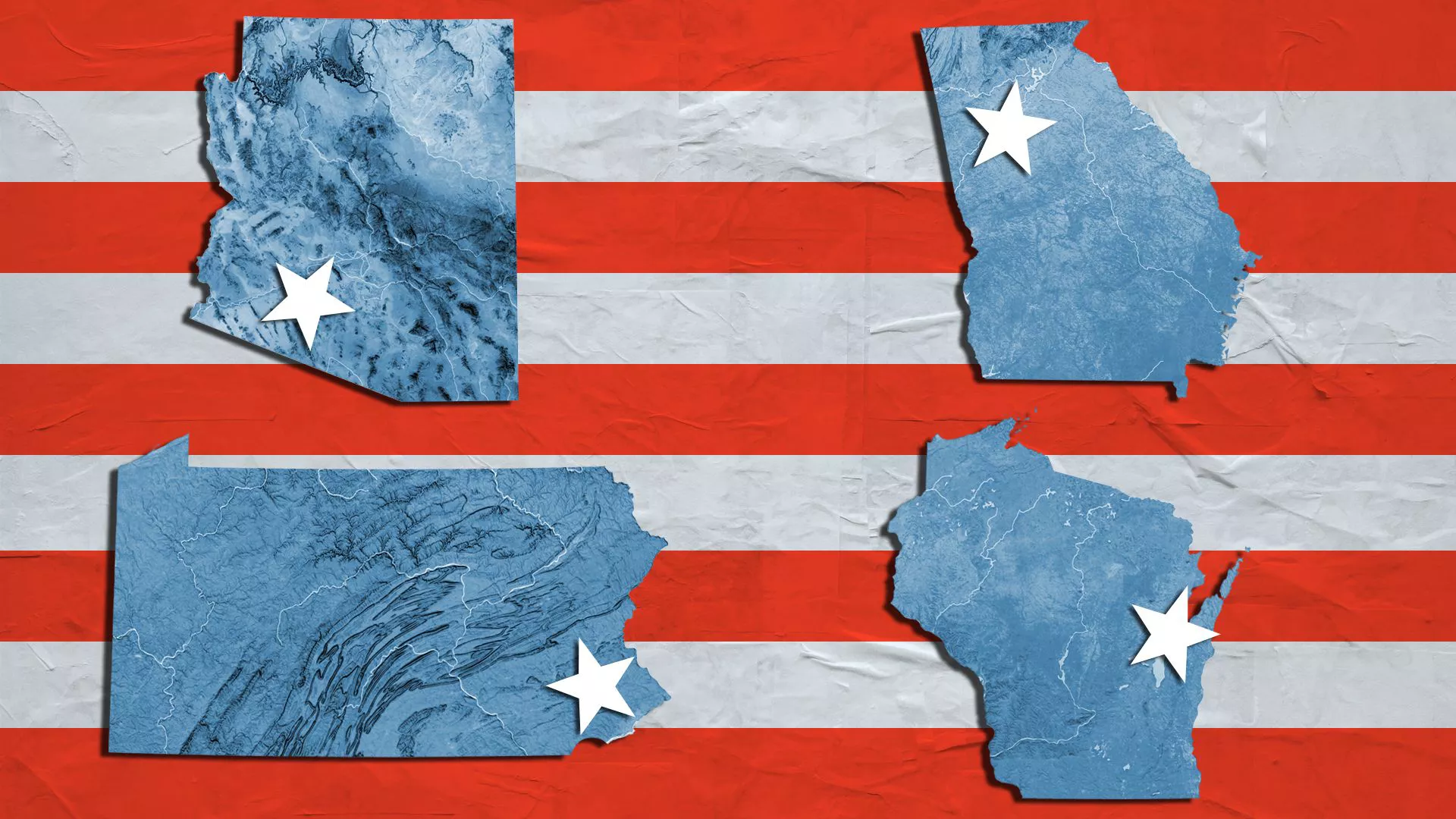
Peter Zeihan: Europe Goes Nuclear
We’ve got two major developments in Eurasia. We’re talking about Ukraine disabling two ships in the Caspian Sea and Poland getting EU approval to build…
Thought Leader: Peter Zeihan

In the four battleground states likely to decide the outcome of the next presidential election, clawing back swing-voter support in the suburbs will be the key to unlocking a Republican revival.
Why it matters: Republicans lost six of the eight Senate and governor’s races in Arizona, Georgia, Pennsylvania and Wisconsin in 2022. A suburban bellwether county in each of these states could make all the difference for the GOP in 2024.
1. Bucks County, Pennsylvania: The epicenter of any GOP comeback in Pennsylvania starts in Bucks County. One of the only bright spots for Republicans in Pennsylvania is that moderate Rep. Brian Fitzpatrick (R-Pa.) easily won re-election, even as the county he represents swung blue.
2. Brown County, Wisconsin: Centered in Green Bay, the fourth-most populous county in Wisconsin doesn’t get as much attention as those including Milwaukee and Madison — but its competitive nature is pivotal to any GOP candidate’s prospects.
3. Cobb County, Georgia: This was once former House Speaker Newt Gingrich’s rock-ribbed Republican home base, but now it’s a fast-growing, diversifying and affluent corner of suburban Atlanta that has favored Democrats in the Trump era.
4. Maricopa County, Arizona: The population center of Arizona covers both the city of Phoenix and its expansive suburbs. Once a GOP stronghold, the battleground county has become the focus of the election denial movement that Trump has championed.
The bottom line: “You’re going to have your soccer moms and Peloton dads. Those college-educated voters, specifically in the suburbs, are ones that Republicans have to learn how to win,” Virginia Gov. Glenn Youngkin’s campaign strategist Kristin Davison told the New York Times.
Peter Zeihan: Europe Goes Nuclear
We’ve got two major developments in Eurasia. We’re talking about Ukraine disabling two ships in the Caspian Sea and Poland getting EU approval to build…
Thought Leader: Peter Zeihan
Dr. Sanjay Gupta’s Top Health Stories of 2025
From the resurgence of measles to a new way to treat pain, 2025 was a challenge for public health while still offering moments of hope. Sanjay…
Thought Leader: Sanjay Gupta
Ian Bremmer: The state of global conflict in 2025
On GZERO World, Ian Bremmer takes a hard look at the biggest global crises and conflicts that defined our world in 2025 with CNN’s Clarissa…
Thought Leader: Ian Bremmer

